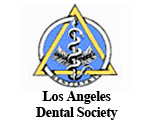Periodontal (gum) disease is caused by bacterial growth in the mouth. If not treated, gum disease can cause tooth loss due to the destruction of tissue that surrounds the teeth. Peridontal, “around the tooth”, is a disease that when the bacteria begins to infect the gum and bone supporting the death causing inflammation of the gums.
Two forms of periodontal disease are gingivitis and periodontitis. Gingivitis, the mildest form of the disease, is where the gums become inflamed due to bacteria. The gums generally become red, swollen, and tend to bleed easily. Gingivitis is caused by insufficient oral hygiene, but with adequate professional and home treatment gingivitis is reversible.
When gingivitis is not treated it can advance to periodontitis. Peridontitis is the most severe where the infection destroys the soft tissue and bone that support the teeth. Periodontitis can cause bad breath, red-purple gums, or shiny gums.
Treatment
Non- surgical or surgical treatment may be required based on the severity of the disease. Non-surgical treatment includes a careful cleaning of the root surface of plaque and tarter and may include prescribed antibiotics. Surgical treatment is necessary when the tissue around your teeth is unhealthy and cannot be repaired.




